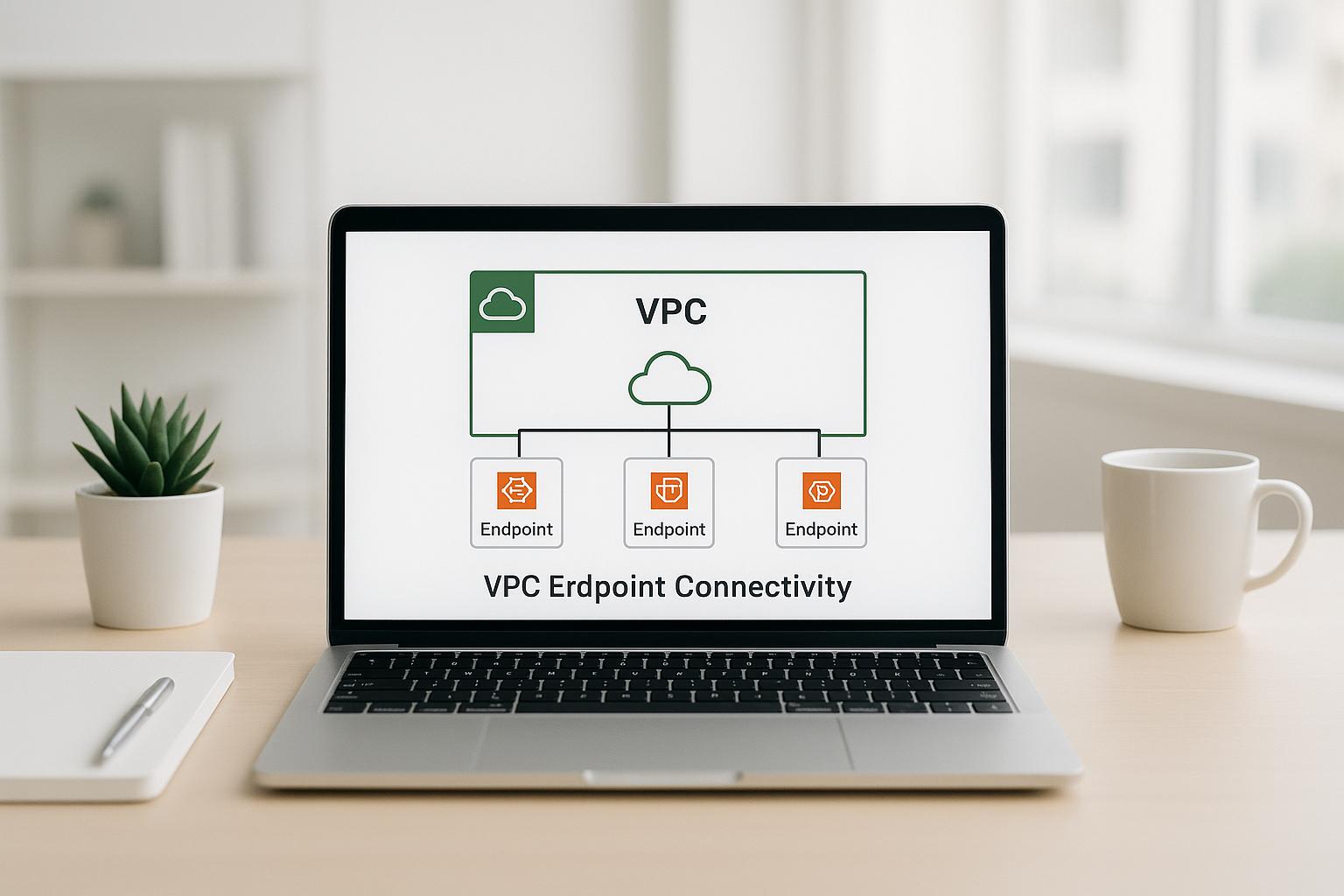Looking to build scalable, secure, and efficient applications on AWS? The 3-tier architecture is the answer. It divides applications into three layers - Presentation, Application, and Data - making it easier to scale, maintain, and secure each layer independently. Here’s a quick breakdown:
- Presentation Layer: Manages the user interface using tools like Amazon CloudFront, Elastic Load Balancer, and S3.
- Application Layer: Handles business logic with services like EC2, Auto Scaling, and Elastic Beanstalk.
- Data Layer: Focuses on data storage and retrieval using RDS, DynamoDB, and ElastiCache.
Why Use 3-Tier on AWS?
- Scalability: Each layer scales independently using Auto Scaling.
- Security: Isolate layers with Security Groups and VPC.
- High Availability: Deploy across multiple Availability Zones.
- Cost Efficiency: Pay only for what you use.
AWS provides tailored services for each layer to ensure high performance, reliability, and security. Whether you’re hosting websites, processing data, or managing databases, this architecture is designed to optimize your application’s performance while minimizing downtime.
Key takeaway: The 3-tier architecture on AWS is ideal for building modern, scalable applications with clear separation of concerns and robust security.
Presentation Layer: User Interface Components
In a 3-tier architecture, the presentation layer focuses on smooth user interactions by utilizing AWS services designed for performance, scalability, and security. This layer operates in public subnets within your VPC and employs several AWS tools to improve front-end efficiency.
Amazon CloudFront for Content Delivery
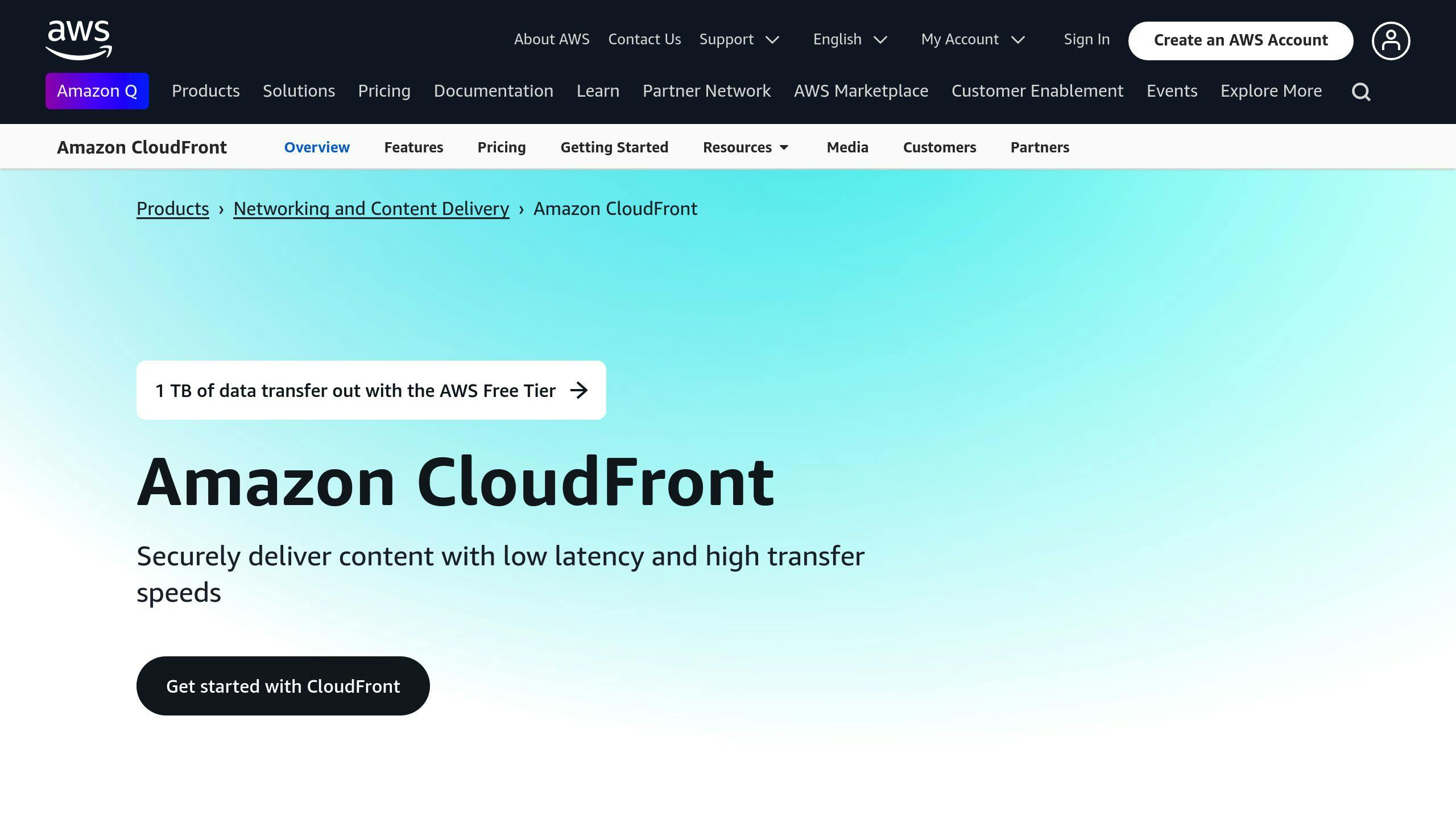
Amazon CloudFront speeds up content delivery using its global CDN network. By caching content at edge locations close to users, it minimizes latency and boosts performance. When paired with other AWS services, CloudFront offers:
| Feature | Purpose | Details |
|---|---|---|
| Caching Layers | Lowers latency and reduces origin load | Includes edge caching and Origin Shield |
| HTTPS Security | Ensures secure data delivery | Uses SSL/TLS encryption |
Elastic Load Balancer for Traffic Distribution
The Application Load Balancer (ALB) distributes incoming traffic across multiple targets within the presentation layer. This ensures high availability by routing traffic to healthy resources, performing health checks, and supporting content-based routing. ALB also handles SSL/TLS termination, simplifying secure connections.
Amazon S3 for Static Asset Hosting
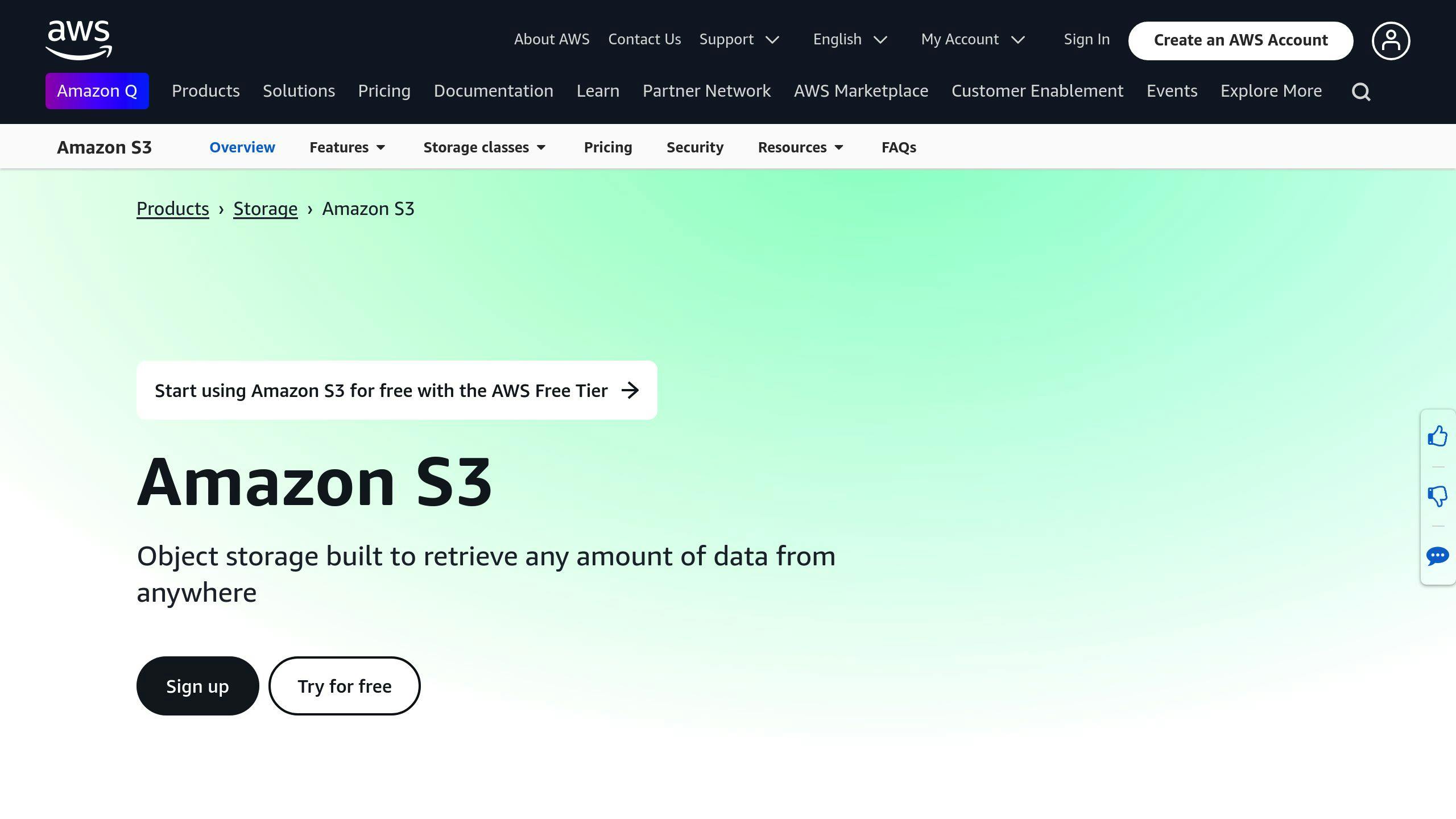
Amazon S3 is an efficient storage option for static content, including HTML, CSS, JavaScript, and media files. Configured for static website hosting, S3 provides:
| Feature | Functionality |
|---|---|
| Versioning | Keeps multiple versions of assets for rollback |
| Access Control | Offers granular control via bucket policies |
| Scalability | Automatically adjusts to traffic demands |
To enhance security, the presentation layer uses security groups and Network ACLs to manage traffic control. While this layer focuses on user interaction, the application layer takes over to process business logic and manage user requests effectively.
Application Layer: Business Logic Processing
The application layer handles client requests, executes business logic, and connects the presentation and data layers. It ensures smooth data processing and transformation to meet application requirements, acting as the bridge between user interactions and data storage.
Amazon EC2 for Hosting Application Servers
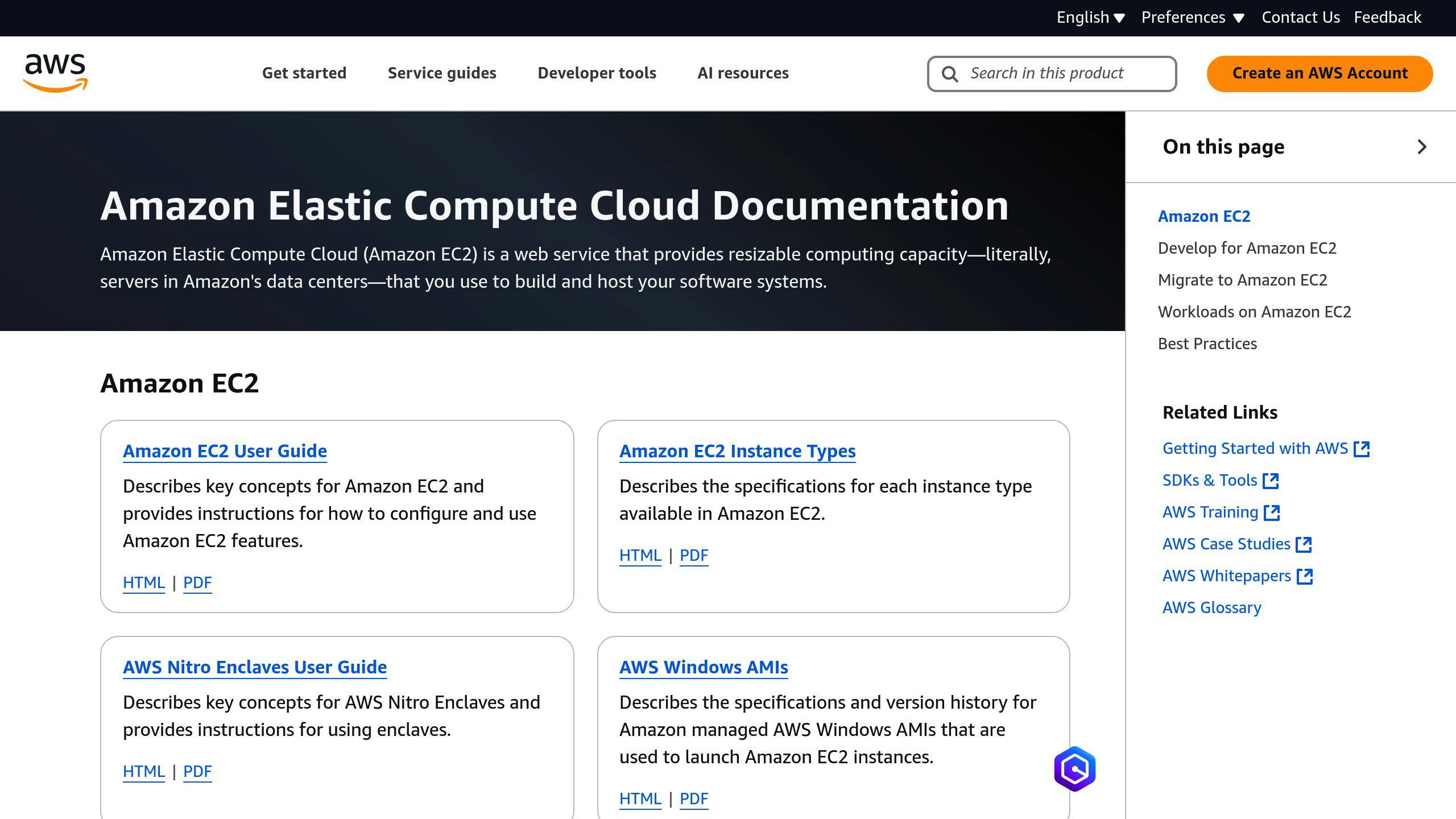
Amazon EC2 offers flexible compute capacity for hosting application servers. You can customize EC2 instances to match your application needs through several configuration options:
| Configuration Aspect | Purpose | Implementation |
|---|---|---|
| Instance Types | Match performance needs | Choose based on CPU, memory, and storage requirements |
| AMIs | Maintain consistency | Use custom images for standardized deployments |
| Security Groups | Manage access | Set inbound/outbound rules for traffic control |
Auto Scaling for Flexible Resource Management
Auto Scaling Groups (ASG) automatically adjust the number of EC2 instances to balance performance and costs. The service monitors instance health and replaces any that fail. Key benefits of using Auto Scaling include:
- 99.99% application uptime
- 20% reduction in operational costs
- 30% faster average response times
AWS Elastic Beanstalk for Simplified Deployment
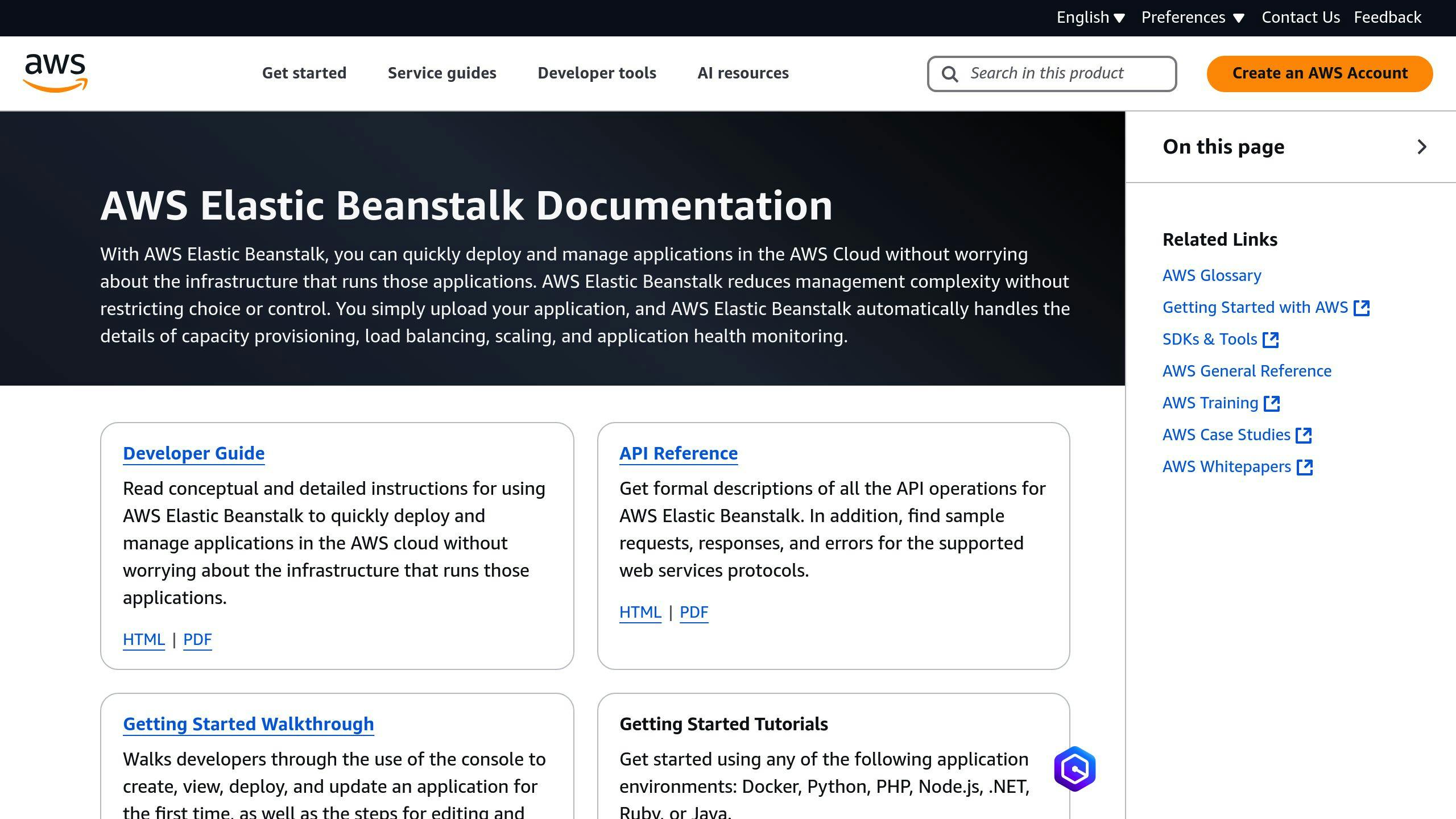
AWS Elastic Beanstalk makes deploying applications easier by automating infrastructure setup and configuration. This platform-as-a-service (PaaS) solution offers:
| Feature | Advantage |
|---|---|
| Capacity Provisioning | Automatically allocates resources as needed |
| Load Balancing | Distributes traffic evenly across instances |
| Health Monitoring | Continuously checks and recovers system health |
| Auto Scaling | Adjusts resources dynamically based on demand |
A well-functioning application layer relies on secure communication between components while ensuring high availability and scalability. To enhance security and consistency, consider using custom health checks and launch templates. While the application layer processes business logic efficiently, the data layer supports it by managing seamless storage and retrieval of information.
Data Layer: Data Management and Storage
The data layer is the backbone of a 3-tier architecture, responsible for storing, retrieving, and managing data. Positioned within private subnets of a VPC, it ensures secure access, limited to the application layer. This setup supports the application layer by delivering reliable and efficient data management.
Amazon RDS for Relational Data Management
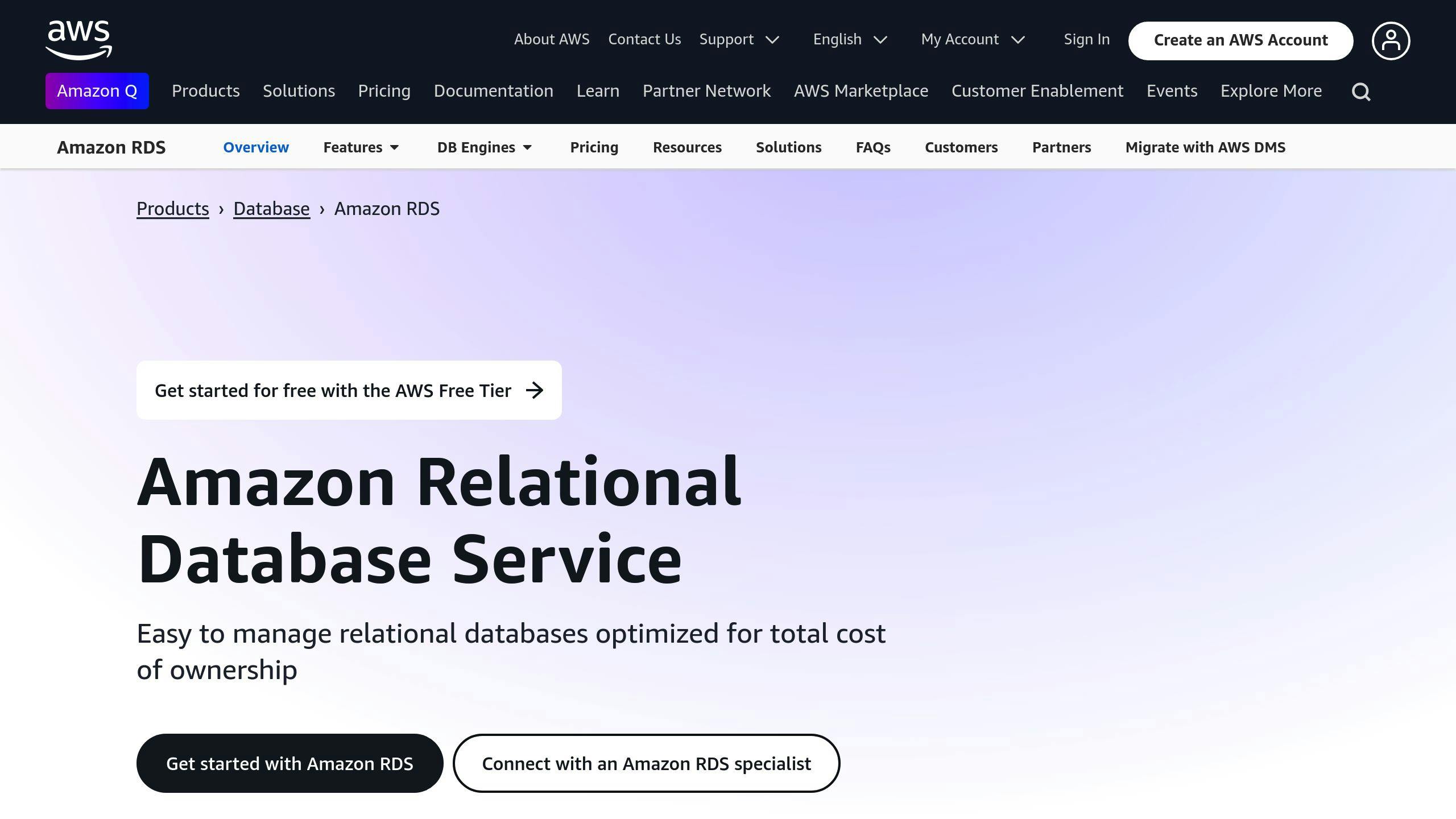
Amazon RDS offers a managed solution for relational databases, supporting multiple database engines. It automates routine tasks and delivers operational advantages:
| Feature | Purpose | Details |
|---|---|---|
| High Availability | Ensures continuous uptime | Includes daily snapshots and cross-zone replication |
| Automated Patching | Simplifies maintenance | Uses scheduled maintenance windows |
| Storage Autoscaling | Avoids storage limitations | Automatically scales up to 64TB |
Amazon DynamoDB for NoSQL Data Handling
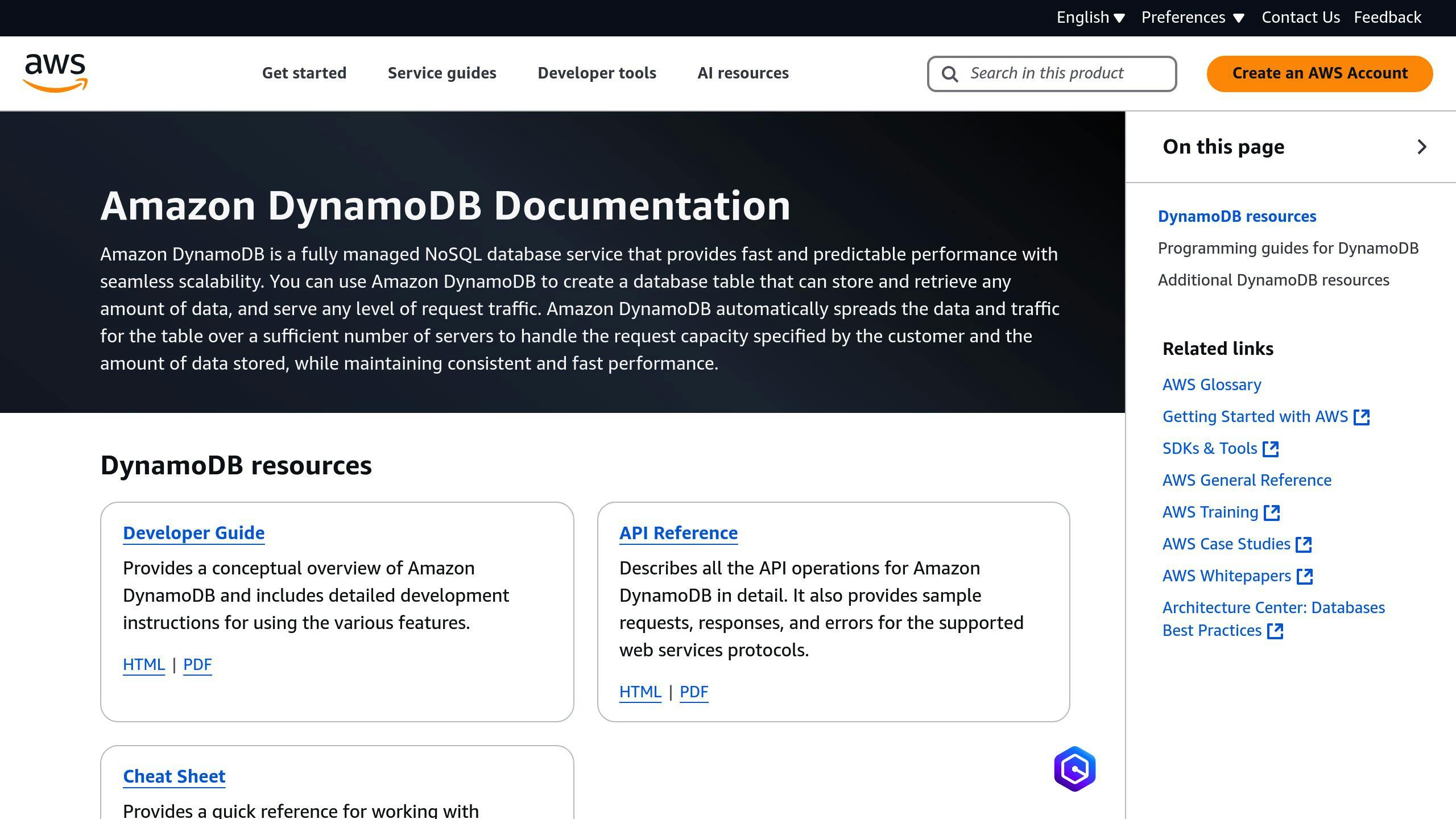
DynamoDB is designed for high-performance applications with flexible schema needs, offering consistent millisecond response times. Key features include:
| Feature | Purpose | Impact |
|---|---|---|
| Auto Scaling & On-Demand | Dynamically adjusts capacity | Maintains performance during traffic spikes |
| Global Tables | Enables multi-region replication | Reduces latency for global users |
Amazon ElastiCache for Data Caching
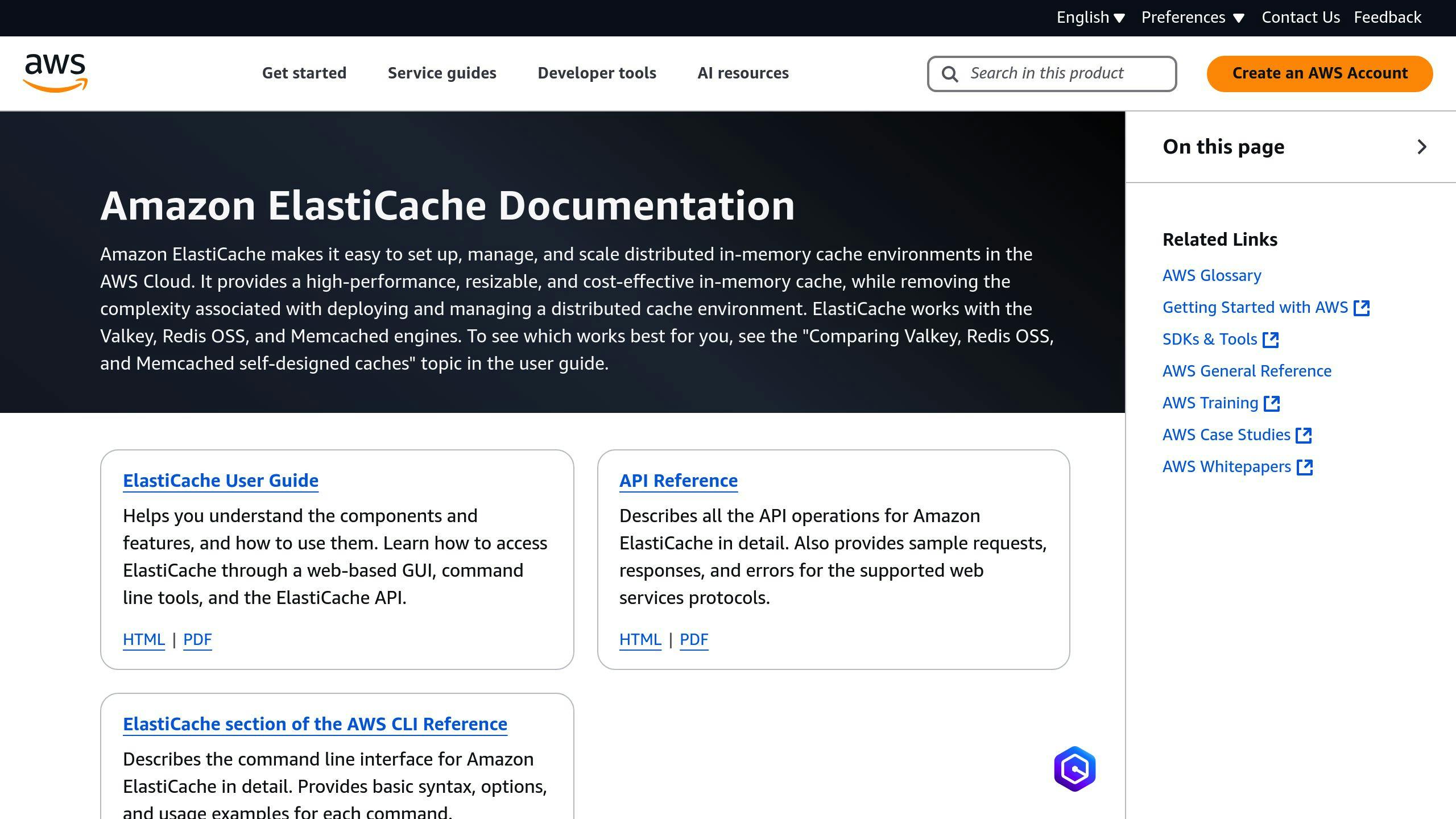
ElastiCache enhances speed by caching frequently accessed data in memory. It supports Redis and Memcached, enabling efficient caching strategies:
| Strategy | Use Case | Benefit |
|---|---|---|
| Cache-Aside | Caches selected data | Improves memory efficiency and performance |
With a solid data layer in place, the focus shifts to implementing effective networking and security measures to safeguard and optimize the architecture.
sbb-itb-6210c22
Networking and Security in 3-Tier Architecture
Ensuring strong networking and security measures is essential for a secure 3-tier architecture. This approach requires careful planning around network segmentation, access controls, and protection against web-based threats.
Amazon VPC for Network Segmentation
Amazon Virtual Private Cloud (VPC) helps separate each application tier into its own network. This setup improves security by using distinct subnet configurations:
| Network Component | Purpose | Access Level |
|---|---|---|
| Public Subnet | Hosts load balancers/web servers; handles internet traffic | Internet-facing |
| Private Application Subnet | Hosts application servers; receives traffic from the presentation tier | Internal only |
| Private Database Subnet | Hosts database instances; receives traffic from the application tier | Internal only |
Security Groups and NACLs for Traffic Management
Security Groups and Network Access Control Lists (NACLs) provide an additional layer of security by controlling traffic flow:
| Control Type | Characteristics | Example Rules |
|---|---|---|
| Security Groups | Instance-level, stateful | Application tier: Allow port 8080 from the presentation tier |
| NACLs | Subnet-level, stateless | Database tier: Allow port 3306 from the application tier |
AWS WAF for Web Protection
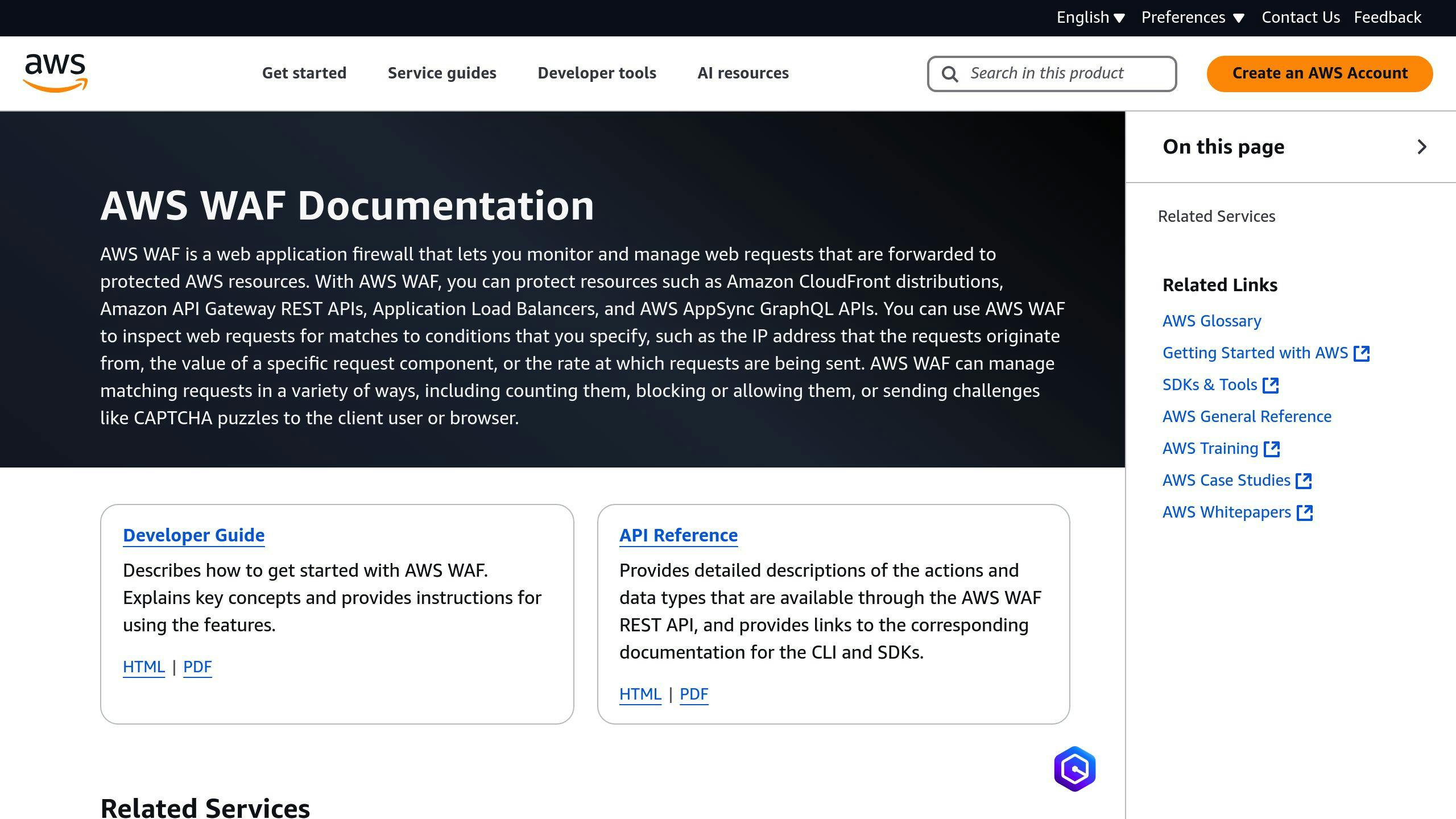
AWS WAF works alongside VPC segmentation and access controls to address application-level threats. It offers protection against:
| Protection Type | Purpose | Implementation |
|---|---|---|
| SQL Injection Prevention | Blocks harmful SQL queries | Custom rules to identify SQL patterns |
| Cross-Site Scripting (XSS) | Prevents script injection attacks | Rule sets to filter suspicious HTML/JavaScript |
| Rate Limiting | Controls request frequency | Limits requests per IP address |
Together, VPC, security groups, NACLs, and AWS WAF create a robust, multi-layered defense strategy.
With these security measures in place, the next focus shifts to optimizing performance, maintaining high availability, and managing costs effectively.
Best Practices for 3-Tier Architecture on AWS
High Availability Across Availability Zones
Running your architecture across multiple Availability Zones (AZs) helps avoid single points of failure and keeps your system running smoothly. Distribute each layer of your architecture across different AZs to maintain uninterrupted operations.
| Component | High Availability Strategy |
|---|---|
| Presentation Tier | Use multiple EC2 instances in an Auto Scaling Group |
| Application Tier | Load balance servers with Auto Scaling |
| Database Tier | Deploy RDS with Multi-AZ configuration |
While ensuring availability is crucial, don't overlook the importance of strong security practices to protect your setup.
Security Implementation Guidelines
Stick to the principle of least privilege when setting up access controls. Use IAM roles to manage permissions, encrypt data both at rest and in transit, and keep an eye on security events with CloudWatch and CloudTrail.
Performance and Cost Optimization Strategies
Balancing performance and costs is key to running an efficient architecture. AWS offers several tools and techniques to help with this:
| Strategy | Tool | Benefit |
|---|---|---|
| Resource Scaling | Auto Scaling Groups | Dynamically adjusts capacity based on demand |
| Cost Management | AWS Cost Explorer | Helps identify cost-saving opportunities |
| Performance Monitoring | CloudWatch | Tracks resource usage and performance |
For deeper savings, consider AWS Savings Plans, which can cut costs on EC2, Fargate, and Lambda by up to 72%. Regularly review your resource usage to "right-size" your infrastructure and avoid waste.
To boost application performance, use Amazon ElastiCache to offload database queries and improve response times. For databases, set up RDS with Multi-AZ and add read replicas to handle heavy workloads more efficiently.
Conclusion
The 3-tier architecture on AWS provides a reliable framework for building scalable and secure applications. By dividing the application into presentation, application, and data layers, it ensures smooth integration with AWS services for efficient delivery, processing, and data management.
To make the most of this architecture, focus on key practices such as:
- Using AWS's high availability features across multiple Availability Zones for better reliability.
- Strengthening security with tools like VPC, Security Groups, and NACLs to protect your application.
- Balancing performance and cost by carefully choosing services and implementing effective scaling strategies.
For additional help and resources, explore AWS documentation, community forums, or platforms like AWS for Engineers. These can offer in-depth insights and practical advice for working with AWS services and architecture.
FAQs
What is a 3-tier architecture in AWS?
A 3-tier architecture in AWS splits applications into three layers: presentation, application, and data. Each layer works independently, making it easier to manage and maintain. This setup separates the user interface, business logic, and data storage into distinct sections.
Here’s how these layers function:
- Presentation layer: Handles the user interface and operates in public subnets.
- Application layer: Processes business logic and runs in private subnets.
- Data layer: Manages data storage in isolated private subnets.
AWS offers specific services tailored to each layer:
| Layer | Key AWS Services |
|---|---|
| Presentation | CloudFront, Elastic Load Balancer, S3 |
| Application | EC2, Auto Scaling, Elastic Beanstalk |
| Data | RDS, DynamoDB, ElastiCache |
This structure is ideal for large-scale applications that need strong security, reliable performance, and easy scalability. Check earlier sections for more details on how to set up each layer using AWS services.
